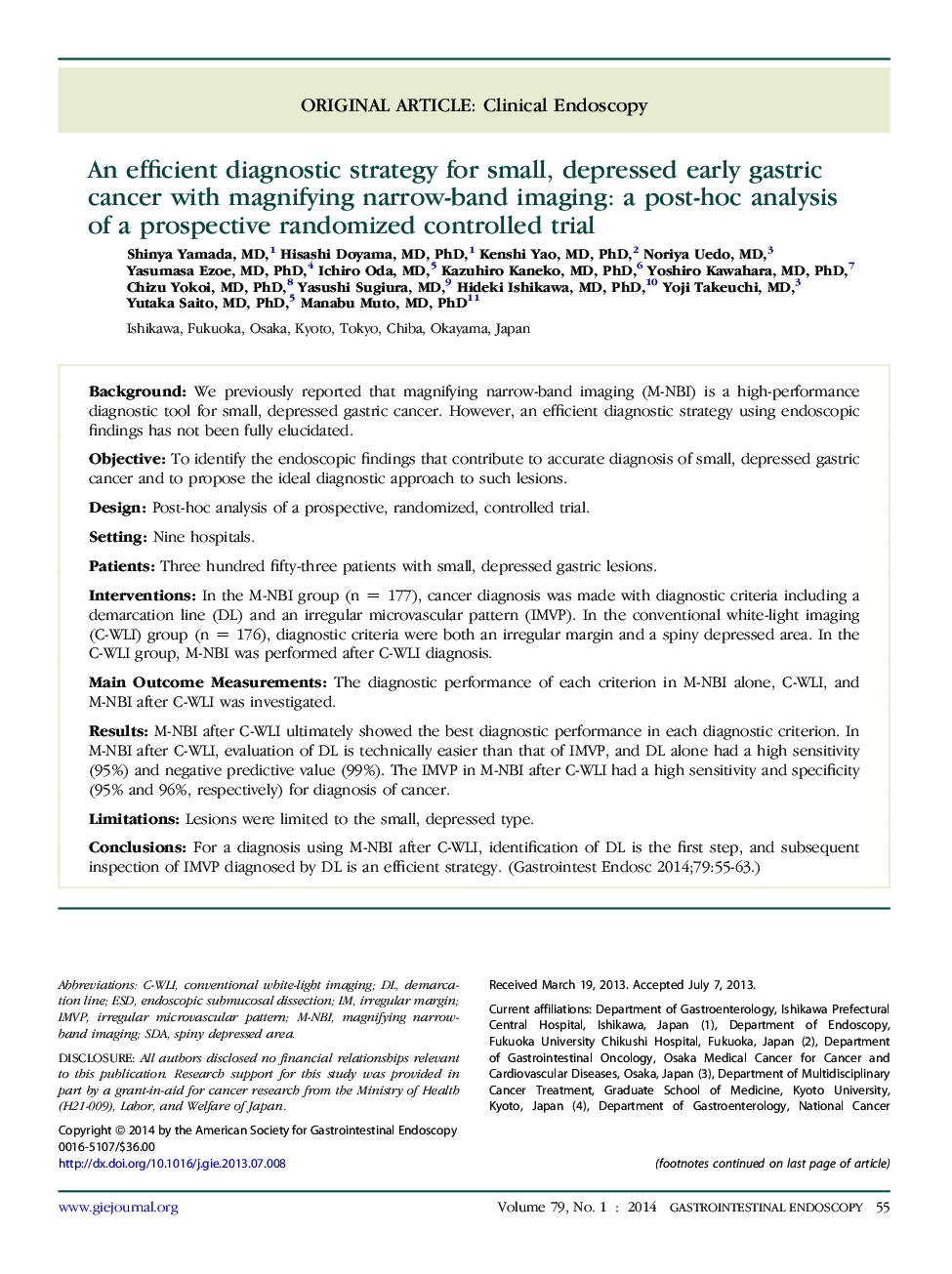| کد مقاله | کد نشریه | سال انتشار | مقاله انگلیسی | نسخه تمام متن |
|---|---|---|---|---|
| 3303780 | 1210322 | 2014 | 9 صفحه PDF | دانلود رایگان |
BackgroundWe previously reported that magnifying narrow-band imaging (M-NBI) is a high-performance diagnostic tool for small, depressed gastric cancer. However, an efficient diagnostic strategy using endoscopic findings has not been fully elucidated.ObjectiveTo identify the endoscopic findings that contribute to accurate diagnosis of small, depressed gastric cancer and to propose the ideal diagnostic approach to such lesions.DesignPost-hoc analysis of a prospective, randomized, controlled trial.SettingNine hospitals.PatientsThree hundred fifty-three patients with small, depressed gastric lesions.InterventionsIn the M-NBI group (n = 177), cancer diagnosis was made with diagnostic criteria including a demarcation line (DL) and an irregular microvascular pattern (IMVP). In the conventional white-light imaging (C-WLI) group (n = 176), diagnostic criteria were both an irregular margin and a spiny depressed area. In the C-WLI group, M-NBI was performed after C-WLI diagnosis.Main Outcome MeasurementsThe diagnostic performance of each criterion in M-NBI alone, C-WLI, and M-NBI after C-WLI was investigated.ResultsM-NBI after C-WLI ultimately showed the best diagnostic performance in each diagnostic criterion. In M-NBI after C-WLI, evaluation of DL is technically easier than that of IMVP, and DL alone had a high sensitivity (95%) and negative predictive value (99%). The IMVP in M-NBI after C-WLI had a high sensitivity and specificity (95% and 96%, respectively) for diagnosis of cancer.LimitationsLesions were limited to the small, depressed type.ConclusionsFor a diagnosis using M-NBI after C-WLI, identification of DL is the first step, and subsequent inspection of IMVP diagnosed by DL is an efficient strategy.
Journal: Gastrointestinal Endoscopy - Volume 79, Issue 1, January 2014, Pages 55–63
